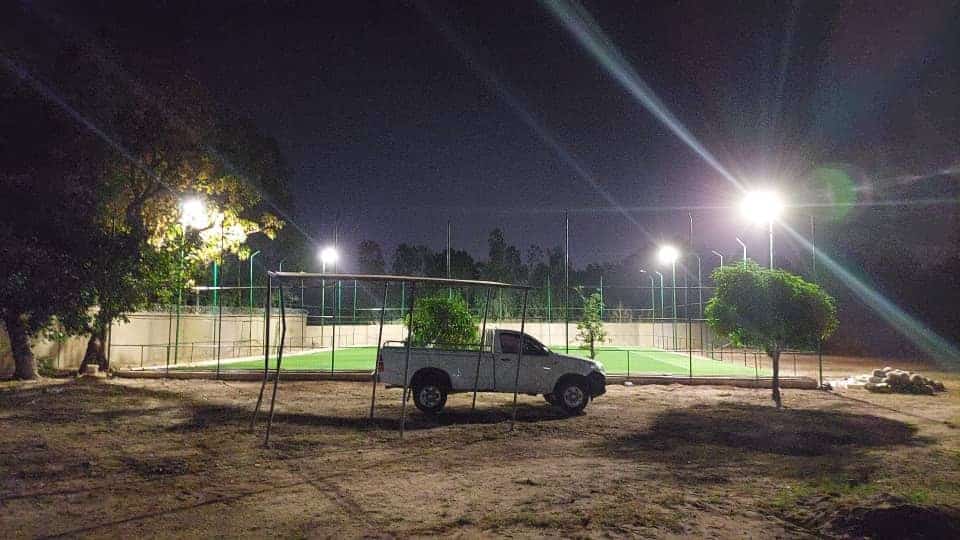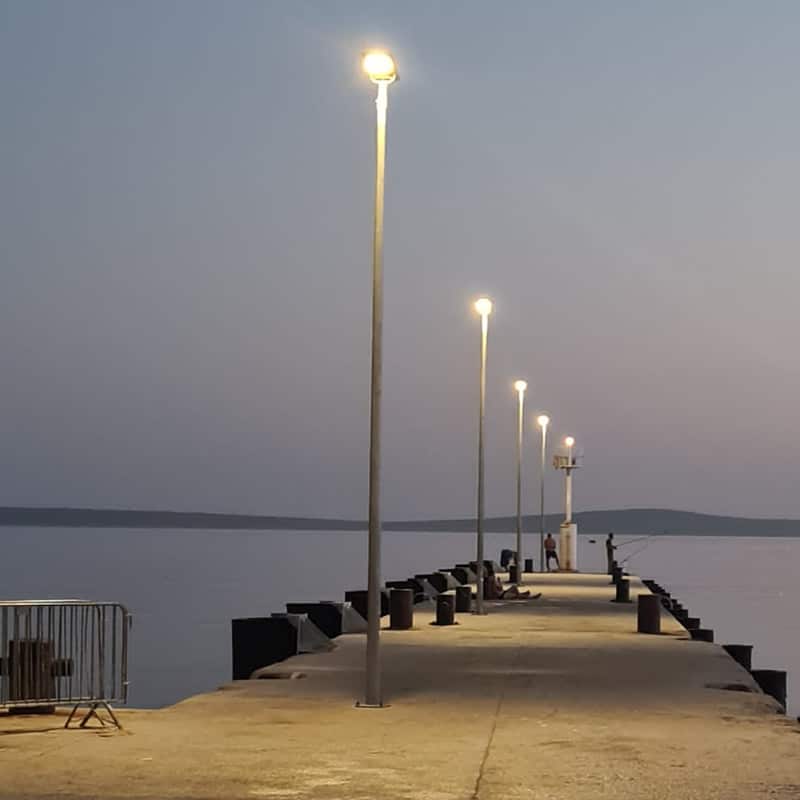When purchasing outdoor solar lighting, many consumers may have some doubts about solar lighting, here are a few common questions answered.
How does outdoor solar lighting work?
Outdoor solar lighting systems usually consist of solar panels, a charge controller and a battery. The solar panel collects solar energy and converts it into direct current energy. The charge controller monitors the charge level of the batteries and manages the charging process to ensure that the batteries are fully charged. The battery stores the energy and provides it to the bulb at night or during cloudy days.
What are the advantages of outdoor solar lighting?
Free energy: Solar street lights use solar energy, so there is no need to pay to use them.
Environmentally friendly: Solar street lights do not emit carbon dioxide, so there is no pollution to the environment.
Reliability: Solar street lights do not need to be connected to wires, so they will not go out due to power outages or faulty wires.
Low maintenance costs: Solar street lights do not require regular replacement of bulbs or batteries, which can greatly reduce maintenance costs.
Safety: Outdoor solar lighting does not require electrical wiring, so there is no risk of electric shock.
Durability: Outdoor solar lighting is often highly durable and can withstand larger loads and higher temperatures.

How long does outdoor solar lighting last?
The lighting duration of outdoor solar lighting depends on a number of factors, including:
- The size of the solar panel: the larger the solar panel, the more solar energy it will be able to collect and therefore the longer the lighting will last.
- The capacity of the battery: the larger the capacity of the battery, the more energy it can store and therefore the longer the lighting time.
- The environment in which the solar lighting system is used: If the solar lighting system is located in a place where it is often cloudy or rainy, the lighting time may be reduced.
- The power of the bulbs: the more powerful the bulbs are, the faster the energy stored in the battery will be consumed and therefore the shorter the lighting time will be.
Typically, the lighting time for outdoor solar lighting can last anywhere from a few hours to several days.
How do I maintain my outdoor solar lighting?
To ensure that your outdoor solar lighting is working properly, regular maintenance is required. Specific maintenance methods including:
- Cleaning solar panels: Dirt can accumulate on solar panels, especially during rainy or sandy weather. Solar panels should be cleaned regularly with a detergent or damp cloth to ensure that they work properly.
- Check the battery: The battery charge and voltage should be checked regularly to ensure that it is working properly. If the charge is too low or the voltage is too high, the battery may need to be replaced.
- Replace the bulb: If the bulb frequently goes out or gives off a faint light, it may need to be replaced.
- Install shades: If the solar lighting system is located in an area where there are trees or other shades, they may block the light from the solar panels. Where necessary, shading should be installed to ensure that the solar panels can function properly.
- Replacing damaged parts: If any part of the solar lighting system is damaged or broken, it should be replaced promptly.
With regular maintenance, you can ensure that your outdoor solar lighting will work properly and extend its life.

Are outdoor solar lights weatherproof?
Outdoor solar lights are usually waterproof and can withstand light rain and humidity. However, they are not resistant to strong winds and rainstorms and therefore may be affected during strong winds or heavy rainfall.
If you want to use your outdoor solar light in strong winds or heavy rain, you should choose a high quality product and ensure that the light has a high level of waterproofing. Care should also be taken to avoid installing the lights in areas that are prone to getting wet during heavy rainstorms.
In conclusion, although outdoor solar lights are waterproof, they are still not completely resistant to strong winds and torrential rain. Care should be taken to avoid using outdoor solar lights in adverse weather conditions.
Table of Contents